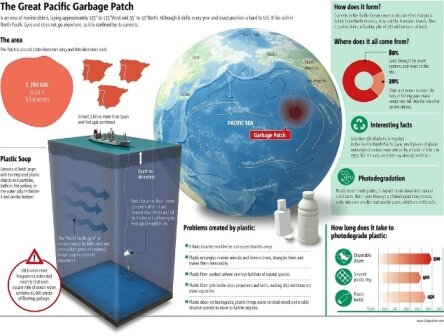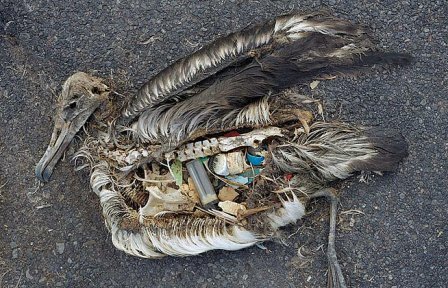The truth is that there is not only one plastic “island” now but the biggest is in the North Pacific which, world renowned sailor, Charles Moore, happened onto in 1997 on one of his voyages. There are currently 5 such islands of plastic in the ocean around the world.

To make matters more urgent, whilst it is the pacific garbage dump that gets the most attention, there are actually 5 of these plastic islands in our oceans. The island of plastic in the Pacific stretches some 500 nautical miles off the coast of California which makes it the biggest of the 5.
Most of us are unable to get directly involved in cleaning this up so what should we do here in our little suburban homes when we hear of something like this? Do you say: “It’s not my rubbish, so I can’t do anything more?” or do you ask yourself how you can make any impact on this situation?
Let’s take a slow look at how this plastic accumulated in the ocean to begin with and as we unbundle it I can show you ways to help…simple green living step by step way.
How did the plastic end up in the oceans?
The oceans are ultimately the final destination for all our human waste. Humans are consumers; we buy things to use on our bodies, in our homes and to eat. Almost everything these days comes in plastic of one form or another. If you do not recycle this plastic ends up in landfill. If you are a litter bug (oh I hope not!) your bottles, cups and other plastic rubbish will end up in storm water drains. These feed into the ocean eventually. No matter where you are in the world, if you litter you are contributing to this plastic island. The ocean has a system of massive ocean currents which act like conveyer belts moving the water around in a predictable pattern. Like any substance being moved along in the water it will collect other substances and bunch together. Eventually when the current slows the water will “drop” its load. This is where the islands are built as the load is dumped in these places around our planet.
What does plastic in the oceans affect?
 There are a few levels to this problem. It’s important to remember thatplastic NEVER goes away, it will just keep on breaking up into smaller and smaller units. As it changes from being a plastic bag or bottle through radiation from the sun and wave action it starts to appear like food to seabirds and fish living in the ocean.
There are a few levels to this problem. It’s important to remember thatplastic NEVER goes away, it will just keep on breaking up into smaller and smaller units. As it changes from being a plastic bag or bottle through radiation from the sun and wave action it starts to appear like food to seabirds and fish living in the ocean.
In 2006 scientists noticed a decline in the population of albatross chicks on the islands in the Pacific and current numbers show that of the 500 000 born each year about 200 000 die annually because their parents mistakenly feed them bits of plastic that resembles food. These chicks then die of starvation and dehydration as their stomachs are full of plastic (from bottle caps to small flecks of plastic) and cannot take in any food. So tragic!
Adult birds feed on the plastic in the oceans too and tests are currently being done on birds with results showing that they have cancer like disease due to the heightened levels of toxins in their stomachs.
Not only this, but the oceans are home to the oxygen making plankton (+/- 50% of the world’s oxygen). Zooplankton (creatures) and Phytoplankton (plants) live in a well-balanced microsystem in the oceans, the one being food for the other and the zooplankton being food for fish and other aquatic life. In the Northern Pacific plankton is now outnumbered 4 to 1. Zooplankton being a food for a host of marine animals and plastic is eaten mistakenly by these creatures as the broken down smaller pieces of plastic closely resemble zooplankton. So not only is the plastic in the oceans killing sea creatures it is killing off the oxygen producers for our world.How does this affect you and me?
Smaller fish also feed on this trash (containing toxic petrochemicals from which plastic is made) and while many die, others can be eaten by larger game fish like tuna which is in turn eaten by us humans, pushing the toxins further down the food chain.
What can I do?
If you are like me and recycle, limit plastic usage, live a simple green life you may ask what more can you do to prevent plastics in the ocean?
Spread the word would be the first thing! Share a link to this article on Facebook, Twitter or any other social media you use. You will find a FB comment box and “share” button at the bottom of this page.
Write your own blog post (if you are a blogger) about this and about how people can stop making the situation any worse.
You can support researchers financially by making a donation to the Algalita Marine Reasearch Institute
Educate your children and family.
Like me, you can make a list of how you can begin to reduce your plastic usage which can be doable for your circumstances.
Either way, this earth with its oceans and land, plants and animals, was given to us by God who has entrusted His creation to our stewardship. What we do each day directly affects the environment. Will you do your share?

